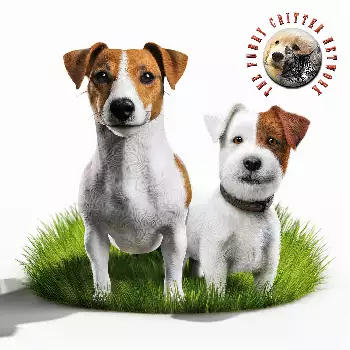The abbreviation JRT has become universally recognized shorthand for Jack Russell Terrier among breed fanciers, veterinarians, and dog enthusiasts worldwide, though it represents an informal designation rather than an official breed name recognized by kennel organizations. This abbreviation emerged naturally within the terrier community as a convenient way to reference the breed in casual conversation, written communications, and online discussions where brevity proves advantageous. The widespread adoption of JRT as an alternate name demonstrates the breed's strong presence in popular culture and the cohesive community of enthusiasts who champion these energetic working terriers.
The full name Jack Russell Terrier honors Reverend John Russell, the nineteenth-century English parson who developed the breed for fox hunting in Devon, England. Reverend Russell's breeding program emphasized working ability over appearance, creating terriers capable of going to ground after foxes while possessing sufficient leg length to keep pace with hounds during hunts. His name became synonymous with this type of working terrier, though considerable variation existed among dogs called Jack Russell Terriers throughout the breed's early development. The formalization of breed standards occurred much later, creating ongoing debates about proper type that continue influencing breed recognition and nomenclature today.
Recognition of the JRT by major kennel organizations has proven complex and contentious, with different registries adopting varying positions on whether Jack Russell Terriers, Parson Russell Terriers, and Russell Terriers represent distinct breeds or variations of a single breed. The Kennel Club in the United Kingdom initially recognized the Parson Jack Russell Terrier in 1990, later shortening the name to Parson Russell Terrier to distinguish it from the shorter-legged types more common in some breeding lines. This distinction acknowledged the range of types existing under the Jack Russell Terrier umbrella while establishing specific standards for conformation showing.
The American Kennel Club similarly recognized the Parson Russell Terrier in 1997, establishing breed standards emphasizing the longer-legged, more square-proportioned dogs matching Reverend Russell's original breeding goals. In 2012, the AKC granted separate recognition to the Russell Terrier, a shorter-legged variety standing ten to twelve inches at the shoulder compared to the Parson Russell Terrier's twelve to fourteen inch height requirement. This dual recognition acknowledged genuine breeding differences while creating distinct competitive categories for different body types within the broader Jack Russell Terrier family.
The United Kennel Club took a different approach by recognizing the Jack Russell Terrier as a single breed in 2001, accepting a wider range of sizes and proportions under one breed standard rather than splitting into multiple breeds. The UKC standard accommodates both shorter and taller specimens, reflecting the variation that naturally existed in working Jack Russell Terrier populations worldwide. This inclusive approach appeals to many traditional Jack Russell Terrier breeders who value working ability over conformity to rigid physical specifications and who resist the breed splits implemented by other registries.
Internationally, the Fédération Cynologique Internationale recognizes both the Parson Russell Terrier and Jack Russell Terrier as separate breeds under different breed numbers and standards, with the Jack Russell Terrier standard generally describing the shorter-legged variety. This international recognition provides structure for breeding programs in FCI member countries while acknowledging the distinct types that evolved in different regions. The naming variations and multiple breed recognitions sometimes confuse prospective owners unfamiliar with the complex history underlying what many casually refer to simply as JRTs, though breed clubs and registries maintain that the distinctions serve important purposes in preserving different breeding traditions and working characteristics that developed over the breed's long history.

